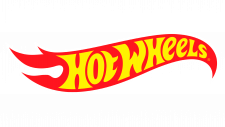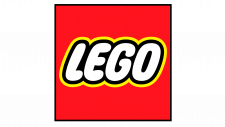Camel Logo
Camel, primarily known for its tobacco products, has evolved its business model in recent years. While still a key player in the tobacco industry, Camel has diversified, exploring areas like reduced-risk products and alternative markets. The company remains a significant presence in the global market, with a strong foothold in North America and Europe. Owned by R.J. Reynolds Tobacco Company, a subsidiary of British American Tobacco, Camel continues to adapt its strategies to align with changing consumer preferences and regulatory landscapes. Their approach reflects the industry’s shifting dynamics, focusing on innovation and sustainability.
Meaning and history
Camel, a notable tobacco brand, was introduced by R.J. Reynolds Tobacco Company (RJR) in 1913. It quickly gained popularity, revolutionizing cigarette marketing with its “Camel” name and exotic imagery. By the 1920s, Camel cigarettes became the U.S.’s most popular brand, a status it held for decades. Post-WWII, the brand faced competition, leading to diversification in its product line.
In 1972, the launch of Camel Lights marked a significant expansion. The 1980s saw Camel introducing novel marketing strategies, including the controversial Joe Camel campaign. This period also witnessed heightened health concerns and lawsuits against tobacco companies.
In 2004, RJR merged with Brown & Williamson, forming Reynolds American Inc. This merger expanded Camel’s reach and resources. Subsequently, in 2015, Reynolds American Inc. became a subsidiary of British American Tobacco (BAT), one of the world’s leading tobacco groups. This acquisition further integrated Camel into a global network, enhancing its market presence.
Throughout its history, Camel has adapted to changing market trends and regulatory landscapes. It has shifted focus, incorporating reduced-risk products and alternative business strategies. Camel remains a significant player in the tobacco industry, constantly evolving to meet new challenges and opportunities.
What is Camel?
Camel is a renowned cigarette brand, first introduced in 1913 by the R.J. Reynolds Tobacco Company. Known for its distinctive blend of Turkish and American tobacco, Camel gained popularity for pioneering pre-packaged cigarettes and innovative marketing strategies. Over the years, it has become a symbol of the evolving tobacco industry, adapting to shifts in consumer preferences and regulatory environments.
1913 – Today
The logo the word “CAMEL” in bold, black, upper-case letters with a distinctive, slightly curved font that conveys a sense of movement. The letters’ outlines are thick and bold, enhancing their visibility. Underneath the text, a silhouette of a single-humped camel stands, contributing an exotic and adventurous aura to the brand’s identity. The camel’s form is simplified, yet recognizable, its contours crisp against the white background. This minimalistic design merges both word and image to create a memorable and enduring emblem.
1980s – 2019
This logo features the word “CAMEL” in large, white, sans-serif letters against a rich blue oval background. Below the lettering, a yellow camel stands confidently, its shape simple yet detailed enough to convey its calm demeanor. The camel’s presence, centered in the oval, suggests reliability and a sense of journey. Surrounding the oval, a rope-like border adds a touch of ruggedness, hinting at the brand’s adventurous spirit. The overall design harmoniously balances boldness with simplicity, echoing the brand’s long-standing heritage.
2019 – Today
The logo features the brand name “CAMEL” in stylized, three-dimensional letters shaded in soft grays, suggesting depth and solidity. Below the inscription is a golden camel, made in a simple but elegant form, its color symbolizing luxury and quality. The camel’s presence adds an exotic character to the logo, while the color palette exudes warmth and approachability. The overall design is clean and modern, with a nod to the brand’s storied heritage and global appeal.














